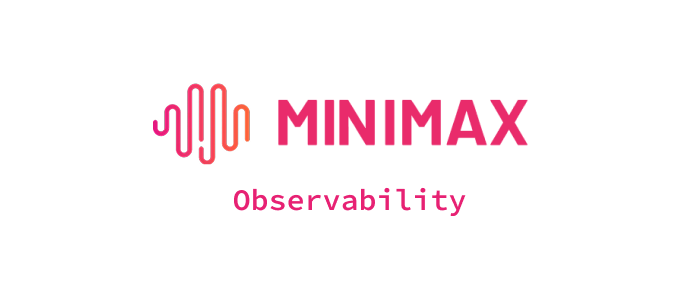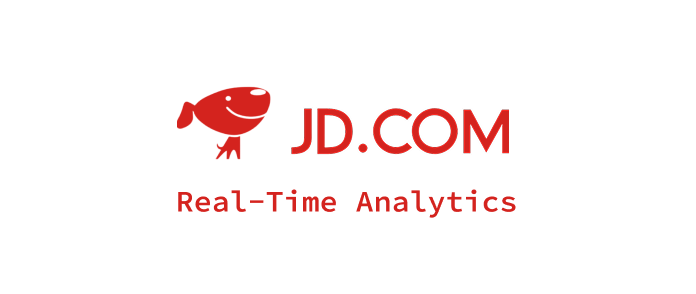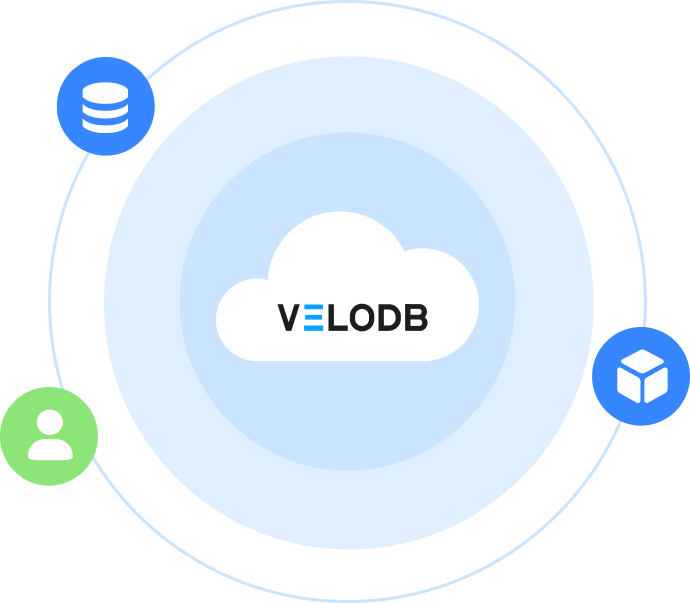1. Introduction / Background
An inverted index is a fundamental data structure used in information retrieval systems and search engines to enable fast full-text search capabilities. Unlike a regular index that maps document IDs to their content, an inverted index reverses this relationship by mapping each unique word or term to a list of documents containing that term. This "inversion" allows search engines to quickly identify which documents contain specific search terms without scanning through entire document collections. Inverted indexes are the backbone of modern search technologies, powering everything from web search engines like Google to database full-text search capabilities in systems like Apache Doris, ClickHouse, and Elasticsearch.
2. Why Do We Need Inverted Index?
Traditional linear search approaches face significant limitations when dealing with large text collections and complex search requirements:
- Linear Search Inefficiency: Searching through documents sequentially becomes prohibitively slow as document collections grow, especially for text-heavy datasets
- Memory and Storage Overhead: Storing complete document content for search purposes requires excessive memory and disk space
- Complex Query Processing: Boolean queries, phrase searches, and relevance ranking are computationally expensive without proper indexing
- Poor Scalability: Performance degrades exponentially with dataset size using brute-force search methods
- Real-time Requirements: Modern applications demand sub-second response times for search queries across millions of documents
Inverted indexes solve these challenges by providing:
- Logarithmic Search Performance enabling fast term lookups even in massive document collections
- Efficient Storage Utilization through compressed posting lists and bitmap representations
- Advanced Query Capabilities supporting boolean operations, phrase queries, and relevance scoring
- Horizontal Scalability through distributed indexing and sharding strategies
- Real-time Search Performance with optimized data structures like roaring bitmaps
3. Inverted Index Architecture and Core Components
Overall Architecture
An inverted index consists of two main components: a vocabulary (dictionary) containing all unique terms, and posting lists that map each term to the documents containing it, often with additional metadata for relevance scoring.
Key Components
3.1 Vocabulary/Dictionary
- Term Storage: Hash tables or B-trees containing all unique words or tokens from the document collection
- Term Normalization: Stemming, lowercasing, and stop-word removal for consistent indexing
- Term Statistics: Document frequency (DF) and collection frequency (CF) for relevance calculations
- Memory Optimization: Compressed storage using techniques like front-coding and delta compression
3.2 Posting Lists
- Document IDs: Lists of documents containing each term, typically sorted for efficient intersection operations
- Term Frequencies: Within-document occurrence counts for relevance scoring algorithms
- Position Information: Word positions within documents for phrase query support
- Compression: Frame-of-reference and delta encoding and variable-byte encoding for space-efficient storage
3.3 Index Construction Pipeline
- Tokenization: Breaking documents into individual terms using language-specific analyzers
- Term Processing: Normalization, stemming, and filtering to create standardized vocabulary
- Sorting and Merging: Organizing posting lists for optimal query performance
- Compression: Applying Frame-of-reference and delta encoding and encoding schemes to reduce storage requirements
3.4 Query Processing Engine
- Term Lookup: Fast vocabulary searches using hash tables or binary search
- Boolean Operations: Efficient intersection, union, and difference operations on posting lists
- Phrase Processing: Position-based filtering for exact phrase matches
- Relevance Scoring: TF-IDF, BM25, and other ranking algorithms for result ordering
4. Key Features and Characteristics
4.1 Basic Structure Example
Documents:
Doc1: "The quick brown fox"
Doc2: "The brown dog"
Doc3: "A quick response"
Inverted Index:
Term | Posting List
------------|-------------
"the" | [Doc1, Doc2]
"quick" | [Doc1, Doc3]
"brown" | [Doc1, Doc2]
"fox" | [Doc1]
"dog" | [Doc2]
"a" | [Doc3]
"response" | [Doc3]
4.3 Database Integration Examples
Apache Doris Inverted Index:
-- Creating table with inverted index
CREATE TABLE documents (
id INT,
title VARCHAR(100),
content TEXT,
category VARCHAR(50),
INDEX idx_content(content) USING INVERTED,
INDEX idx_title(title) USING INVERTED PROPERTIES("parser" = "english"),
INDEX idx_category(category) USING INVERTED
) PROPERTIES (
"replication_num" = "1"
);
-- Full-text search query
SELECT * FROM documents
WHERE content MATCH_ANY 'machine learning algorithm'
AND category = 'technology';
ClickHouse Inverted Index:
-- Creating table with inverted index
CREATE TABLE wiki (
id UInt64,
title String,
content String,
INDEX content_idx content TYPE inverted(2)
) ENGINE = MergeTree
ORDER BY id;
-- Search with Boolean operations
SELECT title FROM wiki
WHERE hasToken(content, 'database')
AND hasToken(content, 'performance');
5. Use Cases
5.1 Full-Text Search Engines
Web search engines like Google and Bing use massive distributed inverted indexes to enable instant search across billions of web pages, supporting complex queries with boolean operators and phrase matching.
5.2 Database Text Search
Modern analytical databases like Apache Doris and ClickHouse integrate inverted indexes to accelerate text queries, log analysis, and content filtering within large-scale data warehouses.
5.3 Document Management Systems
Enterprise content management platforms leverage inverted indexes for document discovery, compliance search, and knowledge management across corporate document repositories.
5.4 E-commerce Product Search
Online retail platforms use inverted indexes to power product search functionality, enabling customers to find items using natural language queries across product descriptions and attributes.
6. Practical Example
- Step 1: Create a table with inverted indexes
-- Create a user behavior logs table
CREATE TABLE user_behavior_logs (
log_id BIGINT AUTO_INCREMENT,
user_id BIGINT,
session_id VARCHAR(64),
action_type VARCHAR(50),
page_url VARCHAR(500),
user_agent TEXT,
search_query VARCHAR(200),
event_time DATETIME,
-- Build an inverted index for the user agent string
INDEX idx_user_agent(user_agent) USING INVERTED PROPERTIES("parser" = "unicode"),
-- Build an inverted index for search queries (English analyzer)
INDEX idx_search_query(search_query) USING INVERTED PROPERTIES("parser" = "english")
)
DUPLICATE KEY(log_id, user_id)
DISTRIBUTED BY HASH(user_id) BUCKETS 32
PROPERTIES (
"replication_allocation" = "tag.location.default: 1"
);
- Step 2: Insert test data
INSERT INTO user_behavior_logs
(user_id, session_id, action_type, page_url, user_agent, search_query, event_time)
VALUES
(1001, 'sess_abc123', 'search', '/search', 'Mozilla/5.0 (Windows NT 10.0; Win64; x64) AppleWebKit/537.36', 'best laptop for programming', '2024-03-15 14:30:00'),
(1002, 'sess_def456', 'click', '/product/12345', 'Mozilla/5.0 (Macintosh; Intel Mac OS X 10_15_7) AppleWebKit/605.1.15', 'gaming mouse reviews', '2024-03-15 14:31:00'),
(1003, 'sess_ghi789', 'search', '/search', 'Mozilla/5.0 (X11; Linux x86_64) AppleWebKit/537.36 Chrome/91.0', 'smartphone battery life comparison', '2024-03-15 14:32:00');
- Step 3: Run full-text search queries
-- Example 1: Find all search actions from Windows users
SELECT user_id, search_query, event_time
FROM user_behavior_logs
WHERE user_agent MATCH_ANY 'Windows NT'
AND action_type = 'search'
ORDER BY event_time DESC;
-- Expected output:
-- +---------+----------------------------+---------------------+
-- | user_id | search_query | event_time |
-- +---------+----------------------------+---------------------+
-- | 1001 | best laptop for programming| 2024-03-15 14:30:00|
-- +---------+----------------------------+---------------------+
7. Key Takeaways
- Inverted indexes enable sub-second full-text search by mapping terms to documents rather than scanning document content sequentially
- Modern compression techniques like Frame-of-reference and delta encoding reduce storage requirements by 5-10x while maintaining fast query performance
- Database integration provides structured and text search combining inverted indexes with traditional column indexes for hybrid queries
- Scalable architecture supports billions of documents through distributed indexing and efficient intersection algorithms
- Real-time performance requirements are met through optimized data structures and compression schemes
8. FAQ
Q: What advantages does Apache Doris’s inverted index have compared with Elasticsearch? A: The key advantages are a unified platform and a simplified architecture. You don’t need to operate a separate Elasticsearch cluster, and you can combine structured analytics with full-text search in the same query. In addition, Doris’s MPP architecture delivers stronger large-scale processing and near-linear scalability.
Q: How much storage overhead does an inverted index add? A: Storage overhead is typically 15–40% of the raw text size, depending on text complexity and the analyzer you choose. Given the substantial query-performance gains (often 100× or more), this storage cost is well worth it.
Q: How do I choose the right analyzer? A: Choose based on the text: the english analyzer targets English documents (with stemming); the chinese analyzer targets Chinese (jieba-based tokenization); and the unicode analyzer works well for multilingual content.
Q: Do inverted indexes support dynamic updates? A: Yes. Doris maintains inverted indexes automatically during data ingestion and compaction. Newly ingested data becomes searchable immediately, and background index optimizations run automatically—no manual intervention required.




